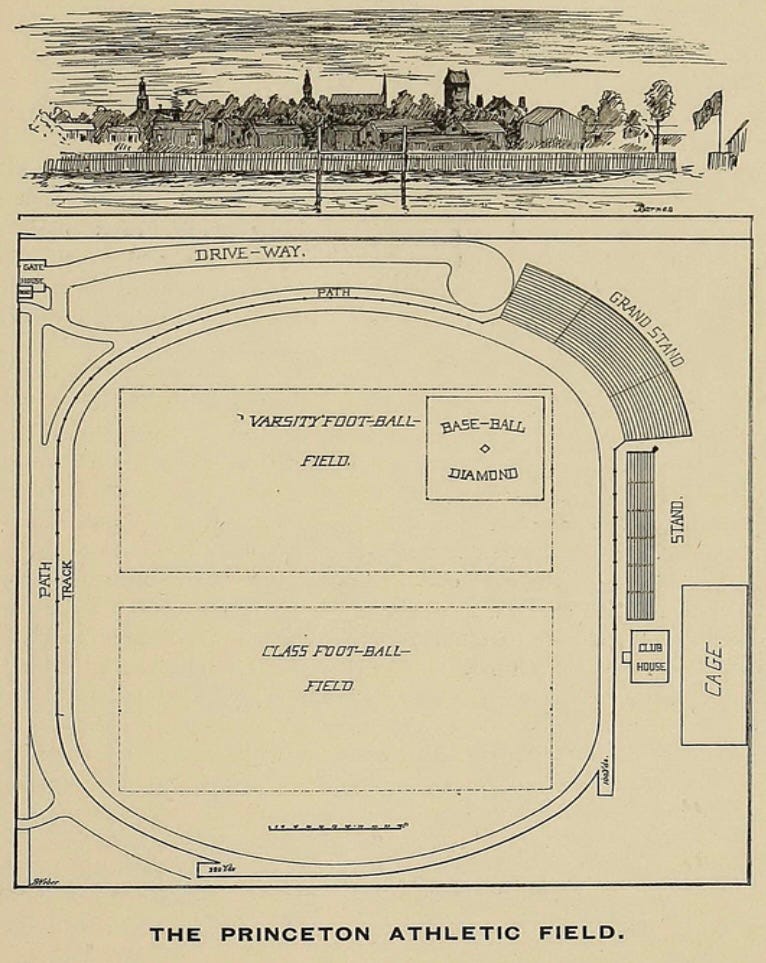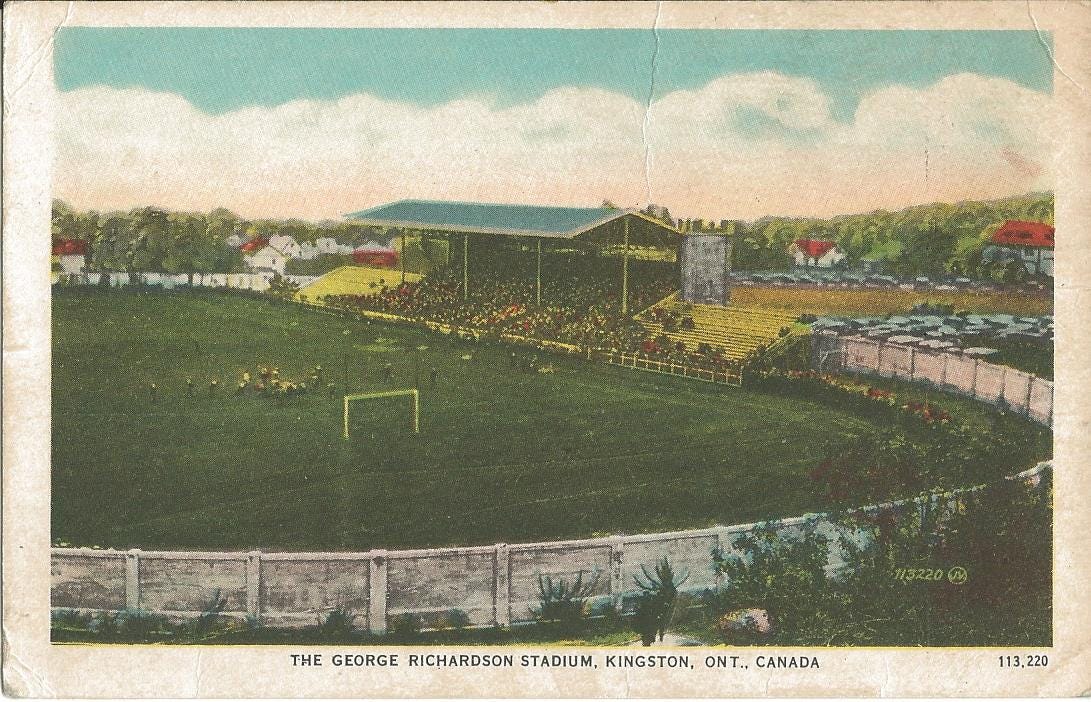Today's Tidbit... Grandstanding in Early Football
I'm not an architectural historian, but that has not stopped me from noticing how some old-time football stadiums had covered grandstands. I'm not referring to stadiums with lower-level seats covered by an upper deck, only stadiums that cover a single level of seating.
The word "grandstand" is used inconsistently. Some consider grandstands to be tiered, with individual seats rather than benches. Others suggest that grandstands have a roof over the ticket buyers’ heads, and bleachers are the seats without cover. This article will adopt the latter definition that says the covered areas are grandstands.
In the early days, few purpose-built football stadiums existed. Big games were played at minor and major league baseball parks with varying configurations. By the 1890s, some faculties frowned on playing games at off-campus stadiums, so schools began building their own stadiums. Whether on campus or not, most stadiums were designed for football and baseball or football and track. Most did not have covers or grandstands, but let’s look at some examples that did.
Corner Grandstands
Below are circa 1888 plans for Princeton's new athletic field with the grandstands in a corner of the football field, but positioned properly for baseball.
The image below shows Princeton’s Phil King preparing to kick off as his teammates align in the V Trick. As seen in the previous drawing, the covered grandstand sits in the corner of the field.
Here’s the grandstand at Wesleyan’s Andrus Field, also situated in the corner for baseball.

Midfield Grandstands
Off-campus stadiums with grandstands centered at midfield were often used for cricket or horse racing, while those built on campus generally had running tracks between the stands and the field. They played the 1893 Penn-Cornell game at the Manheim Cricket Ground, which had a grandstand on one side of the field.

Syracuse opened their beautiful concrete Archbold Stadium in 1907, covering part of one side.
It is difficult to tell if Washington & Jefferson’s grandstand is centered, though it appears to be in the baseball outfield.

It was dangerous to Jump Around at Camp Randall before the stadium was converted to concrete.
Washington fans were among the few to enjoy grandstanding on both sides of the field.
Even the folks up north had grandstands, as witnessed by Queen’s University’s George Richardson Stadium. Built in 1921, Queen’s hosted and won the Stanley Cup there in 1922, back when amateur teams competed for the Cup.
I can’t add more images without exceeding Substack’s email size limits, so I must end it for now. If you know of schools that have had grandstands in the past, let us know in the comments below.
Football Archaeology is reader-supported. Click here to buy one of my books or otherwise support the site.











Chattanooga's Chamberlain Field had some interesting grandstands that were placed on one side of the field, but towards the endzone:
- https://digital-collections.library.utc.edu/digital/collection/p16877coll3/id/973/rec/1
- https://web.archive.org/web/20230228183725im_/https://www.utc.edu/sites/default/files/styles/utc_wide_image/public/2020-09/utc-library-spc-exhibits-chamberlain-field-01.jpg?h=3cd06fc8&itok=tLeZ2f9d
A step further, Richmond's Broad Street Park (I) [1897-1912] had a partial corner grandstand:
- https://img.newspapers.com/img/img?user=5569708&id=827340129&clippingId=145335595&width=820&height=448&crop=1655_2611_2055_1123&rotation=0
- https://upload.wikimedia.org/wikipedia/commons/thumb/c/c2/Broad_Street_Park.png/1200px-Broad_Street_Park.png
Raleigh's Fair Grounds [1873-1925] grandstand was double-deckered from 1873-1902, but had the top level removed 1903-1904
- https://live.staticflickr.com/391/32953740285_f054396cd4_b.jpg
- https://iiif.lib.ncsu.edu/iiif/mc00556-001-bx0001-007-002/full/3103,/0/default.jpg
Hayward Field, U of Oregon (knocked down in recent years to make way for a spaceship of the same name used solely for track and field): https://fishduck.com/2013/05/running-giants-at-historic-hayward-field/
Scroll down more than halfway to see a photo of Bell Field, precursor to Parker Stadium which has been replaced by Reser Stadium at Oregon State (a pretty spectacular structure for its era): https://www.wcsboard.com/index.php?/topic/7653-old-stadium-pictures/
A ranking of Northwest Conference (Pacific Northwest small colleges) stadiums with some small photos; some are modern builds, but you can see echoes of historic grandstands in some: https://catdomealumni.blogspot.com/2011/07/wildcat11s-northwest-conference-stadium.html
And even though it doesn't qualify as a grandstand (i.e., no covered seating), I can't not share this page of information and vintage images of Stadium Bowl located in Tacoma, Wash., adjacent to Stadium High School: https://web.archive.org/web/20150102054624/http://www.klippert.com/Stadium/History.html